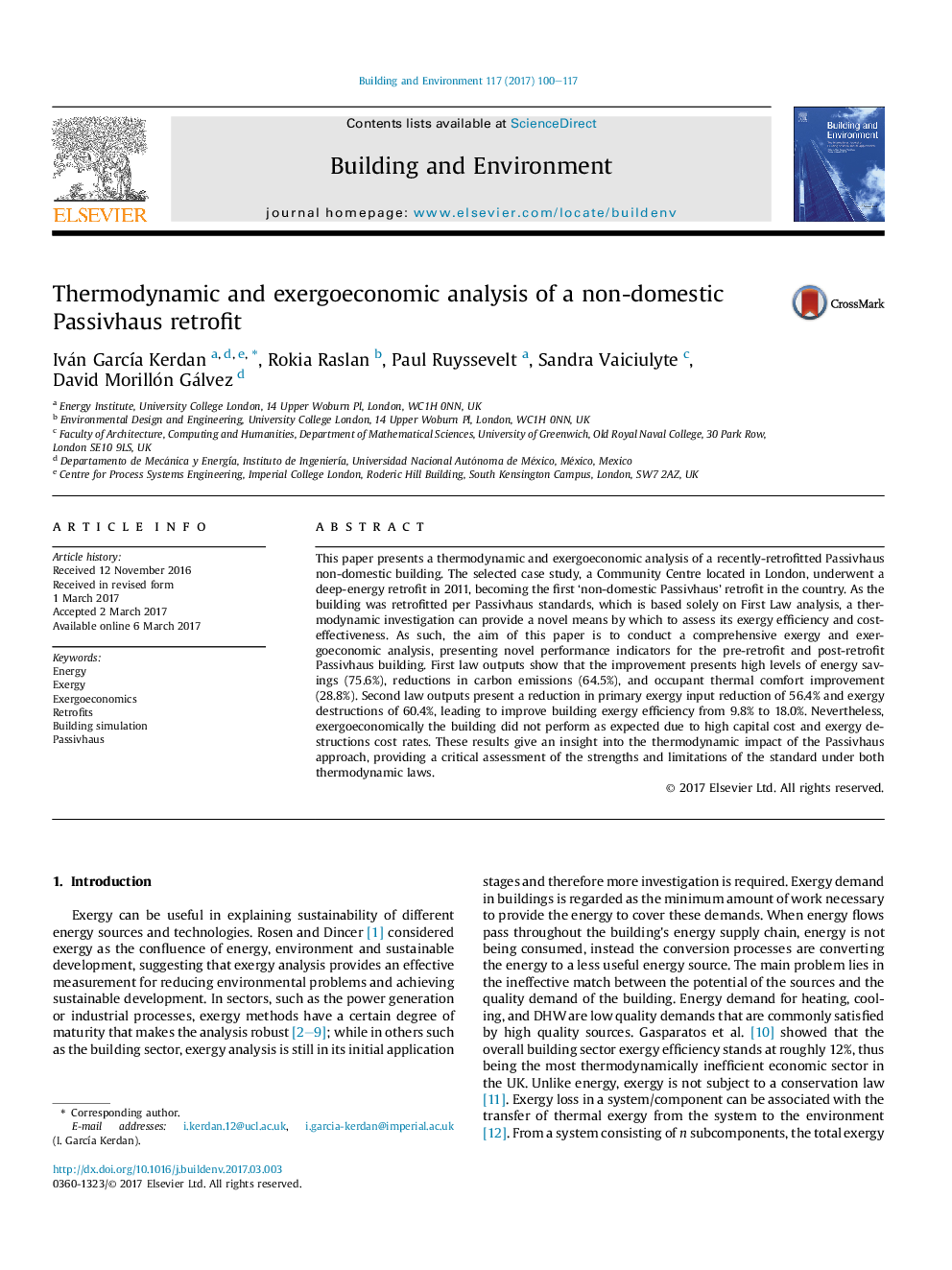| Article ID | Journal | Published Year | Pages | File Type |
|---|---|---|---|---|
| 4917305 | Building and Environment | 2017 | 18 Pages |
Abstract
This paper presents a thermodynamic and exergoeconomic analysis of a recently-retrofitted Passivhaus non-domestic building. The selected case study, a Community Centre located in London, underwent a deep-energy retrofit in 2011, becoming the first 'non-domestic Passivhaus' retrofit in the country. As the building was retrofitted per Passivhaus standards, which is based solely on First Law analysis, a thermodynamic investigation can provide a novel means by which to assess its exergy efficiency and cost-effectiveness. As such, the aim of this paper is to conduct a comprehensive exergy and exergoeconomic analysis, presenting novel performance indicators for the pre-retrofit and post-retrofit Passivhaus building. First law outputs show that the improvement presents high levels of energy savings (75.6%), reductions in carbon emissions (64.5%), and occupant thermal comfort improvement (28.8%). Second law outputs present a reduction in primary exergy input reduction of 56.4% and exergy destructions of 60.4%, leading to improve building exergy efficiency from 9.8% to 18.0%. Nevertheless, exergoeconomically the building did not perform as expected due to high capital cost and exergy destructions cost rates. These results give an insight into the thermodynamic impact of the Passivhaus approach, providing a critical assessment of the strengths and limitations of the standard under both thermodynamic laws.
Related Topics
Physical Sciences and Engineering
Energy
Renewable Energy, Sustainability and the Environment
Authors
Iván GarcÃa Kerdan, Rokia Raslan, Paul Ruyssevelt, Sandra Vaiciulyte, David Morillón Gálvez,
